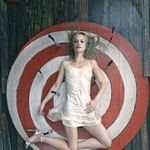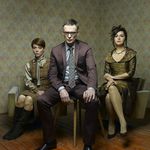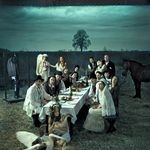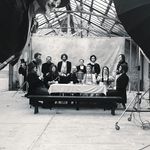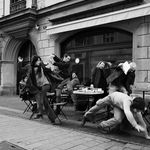Damjan Švarc / Where To and Back

Damjan Švarc / Where To and Back
UGM Kabinet, Strossmayerjeva 6
6 June–11 August 2024
opening: Thursday, 6 June2024, 19:00
curator: Alja Predan, dramaturg and theatre scholar
Damjan Švarc’s photo exhibition with the meaningful title Where to and Back shows the creative process that the theatre photographer goes through, from the close study of the theatre text, the concept of the performance, his own sketches, notes, countless shots to the final decision as to which of the numerous photographs could best fulfil the advertising and marketing function and become a theatre poster.
Theatre photography is a special genre that not only has a documentary, promotional, memoir and, of course, aesthetic dimension, but is also almost the only thing that remains after the actual performance.
For a long time, the renowned photographer Tone Stojko was the only one working in this field in Slovenia. Today, there are several world-class photographers working in the field of theatre photography, including Damjan Švarc.
Damjan Švarc takes a comprehensive approach to theatre photography. He studies the text, consults with the director, scrutinises the analytical material for the programme booklets, follows the rehearsal process, searches for the common point between the essence of the drama or performance and the visual possibilities offered by photography. His aesthetic is special. With clear and refined forms, without superfluous elements, in a recognisable, subdued pastel colour palette or in black and white contrasts, with an unerring flair for composition, whether dynamic or static, he has brought his photographic signature to perfection.
The photos that the photographer takes during one of the rehearsals before the premiere are of course one thing, but the photography for a poster that conveys the core message of the work and is aimed at random passers-by, potential spectators or theatre lovers is another. Photography for posters is first and foremost specially staged, as it also has to fulfil the advertising function. The photographer therefore skilfully adapts the composition to place the typographic information visibly but not obtrusively in its place. To advertise a theatre performance with a photographic poster means to see the quintessence of the performance in a single image.
Among the photographs on display, the photograph for the performance The Cherry Orchard perhaps summarises this idea most aptly. Ranevskaya’s world is literally turned upside down when she learns that the new landowner wants to cut down her cherry orchard and build summer cottages there. The photographer’s selection for Medea is also excellent: the two pale children, naked to the waist, are either ghosts from the afterlife or innocent victims awaiting death at the hands of their own mother; or Lulu, a girl who is an object passed from man to man, a target of their gazes and hands; Hamlet’s vacant eyes, staring into the lens, speak of uncertainty, indecision, forlornness; the portraits of Casimir and Caroline, distorted by the prism of the glass, reveal their failed relationship and allude to the general social corruption; the dynamics in the black and white photographs for Hic Sunt Leones – Here Are Lions or 1981, with its seemingly documentary character, capture on the one hand the constant changeability and on the other the strong bora wind in a literal and figurative sense; the photography for the poster for the performance John Gabriel Borkman is particularly strong: behind Borkman's authoritarian and callous gaze are “his” two women, each with her own agenda …
Damjan Švarc is a photographic perfectionist and a master of a variety of photographic genres: theatrical, poster, portrait, architectural, etc. In this exhibition, he uses his art to speak perceptively about another art, the art of theatre, which is meant to make you think or make you want to see the performance. Or to quote the thought of Dušan Jovanović, who wrote about Tone Stojko and also applies to Damjan Švarc: “Theatre should learn from photography. Photography shows the truth and exposes it down to the bone.”
Damjan Švarc (b. 1969, Celje) studied in Academie voor Beeldende Kunsten in Rotterdam / Visual design. He is professionally engaged in the field of portrait, theater and architecture photography. From 2011 he is Associate lecturer of Architectural Visualization in the University of Maribor in the Department for Architecture.
The exhibition is made in collaboration with 59. Maribor Theatre Festival.

